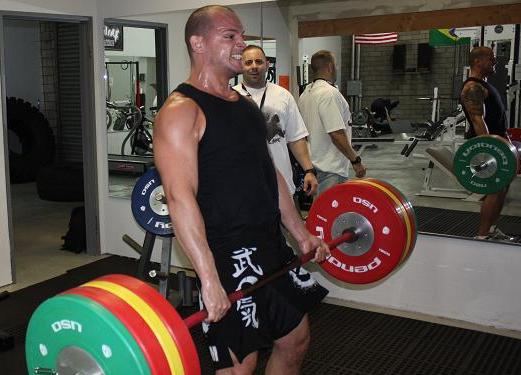What does it take to get your physical conditioning right? What’s the best way to prepare your body for the demands of Jiu-Jitsu training?
If you’re counting the hours before you can hit the mats again, whether because you were gallivanting around at carnival or other reasons, today GRACIEMAG brings you three plum tips plucked from issue 181.
Oriented by the practitioner Leandro Medeiros of Equipe Liboni, an expert on the subject from Unicamp University, we bring you a list of three common mistakes committed by Jiu-Jitsu practitioners in their physical-conditioning routines.
Mistake 1: Neglecting Jiu-Jitsu and focusing only on pumping up in the weight room
The intensity of movement in a Jiu-Jitsu match varies between peaks and plateaus, and you thus have to perform different types of muscular exertion during the course of combat. There are moments where you’re required to exert explosive force, while at others you rely on isometrics or even endurance. To be effective in wielding all these different manifestations of force, VARIATION should be a cornerstone of your strength training or weightlifting routine. You can develop your muscles for all of these forms of muscular exertion by doing specific workouts in the weight room or even on the mat. Often Jiu-Jitsu practitioners are influenced by aesthetically-minded weight lifters who focus only on muscular hypertrophy (for example, 3 to 4 sets of 6 to 12 repetitions at moderate speed with 1- to 2-minute breaks and performing standard exercises). Most of these methodologies meant to pump up muscle fibers don’t provide the right sort of gains in strength, power and endurance. Getting that would require combining sets/reps/load/speed with movement/rest-interval and workout/varied exercise types. Now, muscular hypertrophy does indeed have its importance for Jiu-Jitsu fighters, as it means gains in power (explosiveness) and injury prevention. But you should only work on hypertrophy once you’ve laid a solid foundation of muscular endurance. Immediately following a strength workout and depending on how far off a competition is, you should place greater emphasis on power building. Remember, you want the performance of a fighter, not a bodybuilder. (Tip: reading Martin Rooney’s column in GRACIEMAG will help introduce you to useful and diverse exercises.)
Mistake 2: Failure to adjust workout volume or intensity in training
In a nutshell, training volume is a composite of different variables that hinders how long a weight-training workout lasts. Like number of repetitions and different exercises, for example. On the mat, volume is the number of matches and their duration. Now, intensity is all about the different aspects related to quality of training. For example, in weightlifting it’s the load being lifted. On the mat it’s the “level of difficulty” of the matches—that is, the amount of force employed in the movements.
A Jiu-Jitsu match is overall more intense than it is voluminous, unlike a marathon, for example. Therefore, as a competition approaches, it is only natural that you bring the volume of training down, making way for intensity work, which is closer to what actually transpires in competition. What ends up happening a lot of the time, though, is that training plays out almost exclusively on the mat. The result of that is that you’ll perform with bursts of endurance but won’t be able to reach peak muscle strength and power. Furthermore, you’ll tend to be physically drained as you step into competition. The thing to do is build up a solid foundation of endurance early in the season through volume training, to later bring down the volume and boost the intensity as you go. At most stages of your training, you should avoid raising volume and intensity at the same time, which can lead to fatigue, overtraining, and osteoarticular and muscle injuries.
Mistake 3: Lack of planning affecting adaptation to desired body weight
To count for the whole season, your training has to be firmly grounded in the principles of sport science. Slapdash training routines thrown together randomly don’t do your physical conditioning a bit of good. Truth is, often they’ll do more harm than good, hampering your results in training and competition. And when it comes to making your target weight class, you should plan your weight cut well so it will happen in a natural manner.
It’s important to bear in mind that, unlike in MMA, in Jiu-Jitsu weigh-ins take place on the day of competition. And it’s not uncommon to see competitors having to shed ten or so pounds on tournament day, forcing them to run laps around the gymnasium while wrapped in plastic, sweatshirts or two gis, without eating properly or drinking water. The product of all these harrowing procedures is a weakly, dehydrated and debilitated athlete dragging his feet around the match area.
Planning and periodizing your training in a sensible way is of the utmost importance for you to make it to competition day at the right weight and in good physical shape to compete. By doing so, there’ll be a greater chance of your physiological functions being better adapted to a lower weight division once the big events roll around.
The post Returning to Training? Get Back to Jiu-Jitsu without Messing up on Conditioning first appeared on Graciemag.
